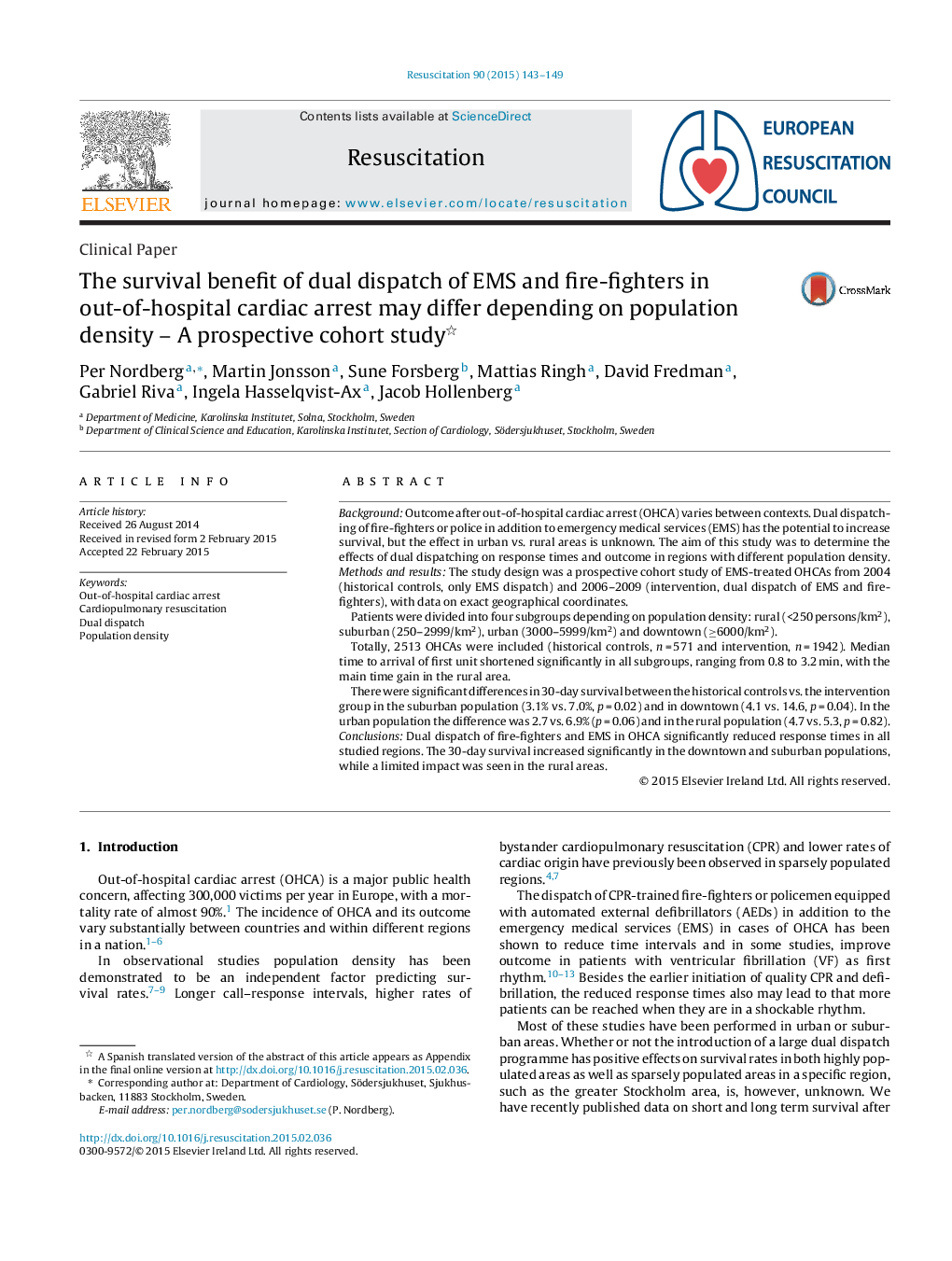| Article ID | Journal | Published Year | Pages | File Type |
|---|---|---|---|---|
| 3007946 | Resuscitation | 2015 | 7 Pages |
BackgroundOutcome after out-of-hospital cardiac arrest (OHCA) varies between contexts. Dual dispatching of fire-fighters or police in addition to emergency medical services (EMS) has the potential to increase survival, but the effect in urban vs. rural areas is unknown. The aim of this study was to determine the effects of dual dispatching on response times and outcome in regions with different population density.Methods and resultsThe study design was a prospective cohort study of EMS-treated OHCAs from 2004 (historical controls, only EMS dispatch) and 2006–2009 (intervention, dual dispatch of EMS and fire-fighters), with data on exact geographical coordinates.Patients were divided into four subgroups depending on population density: rural (<250 persons/km2), suburban (250–2999/km2), urban (3000–5999/km2) and downtown (≥6000/km2).Totally, 2513 OHCAs were included (historical controls, n = 571 and intervention, n = 1942). Median time to arrival of first unit shortened significantly in all subgroups, ranging from 0.8 to 3.2 min, with the main time gain in the rural area.There were significant differences in 30-day survival between the historical controls vs. the intervention group in the suburban population (3.1% vs. 7.0%, p = 0.02) and in downtown (4.1 vs. 14.6, p = 0.04). In the urban population the difference was 2.7 vs. 6.9% (p = 0.06) and in the rural population (4.7 vs. 5.3, p = 0.82).ConclusionsDual dispatch of fire-fighters and EMS in OHCA significantly reduced response times in all studied regions. The 30-day survival increased significantly in the downtown and suburban populations, while a limited impact was seen in the rural areas.
